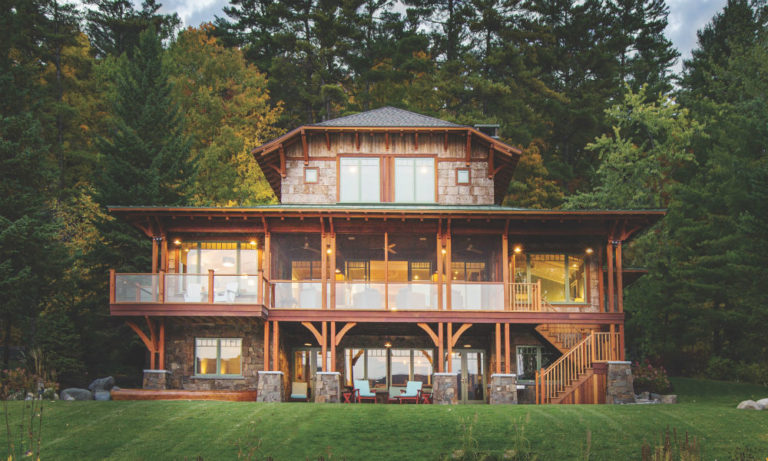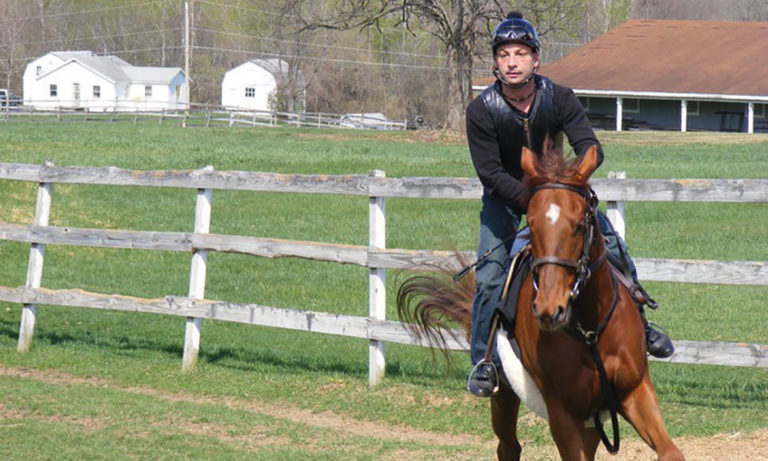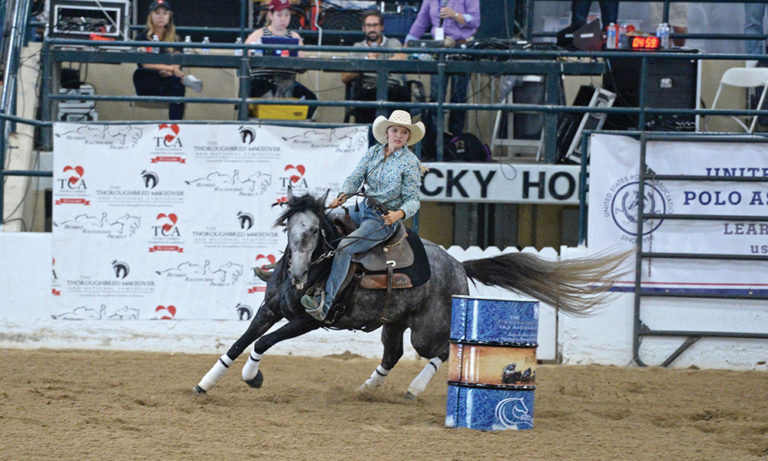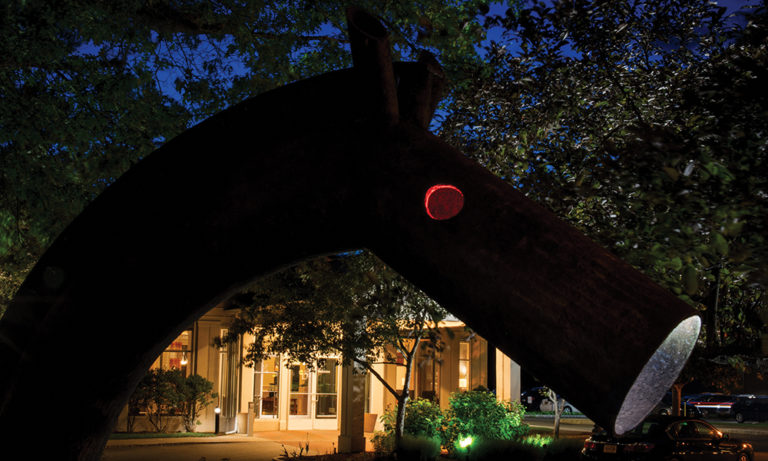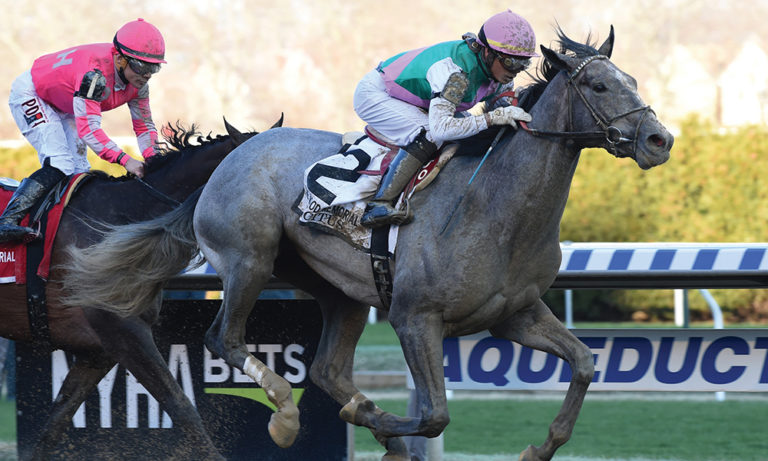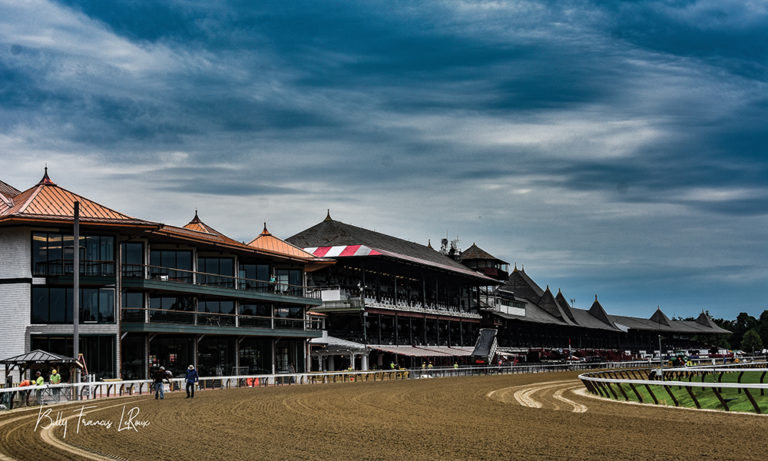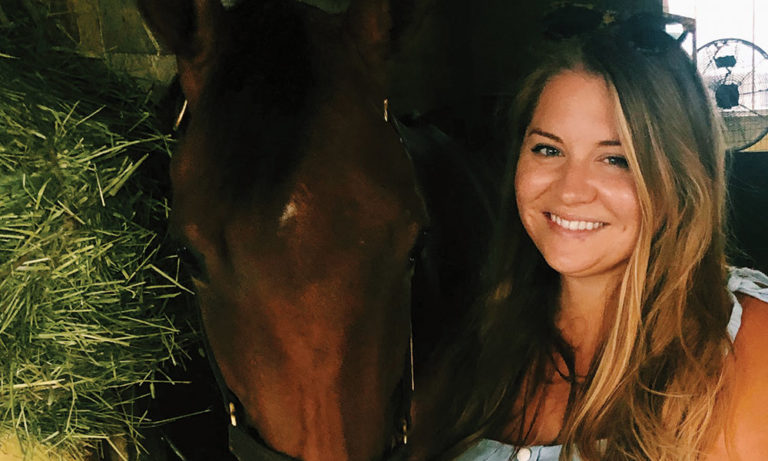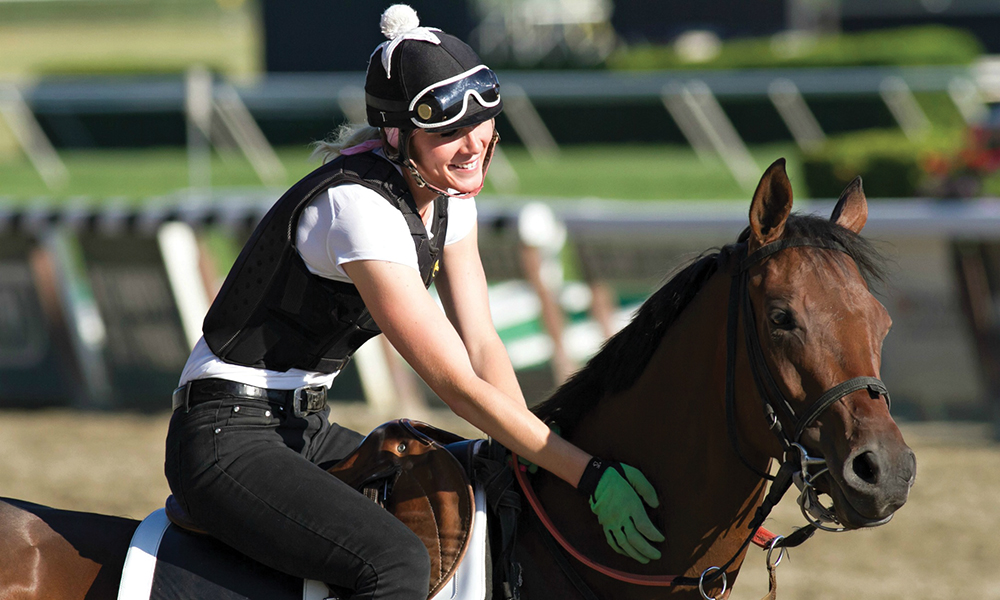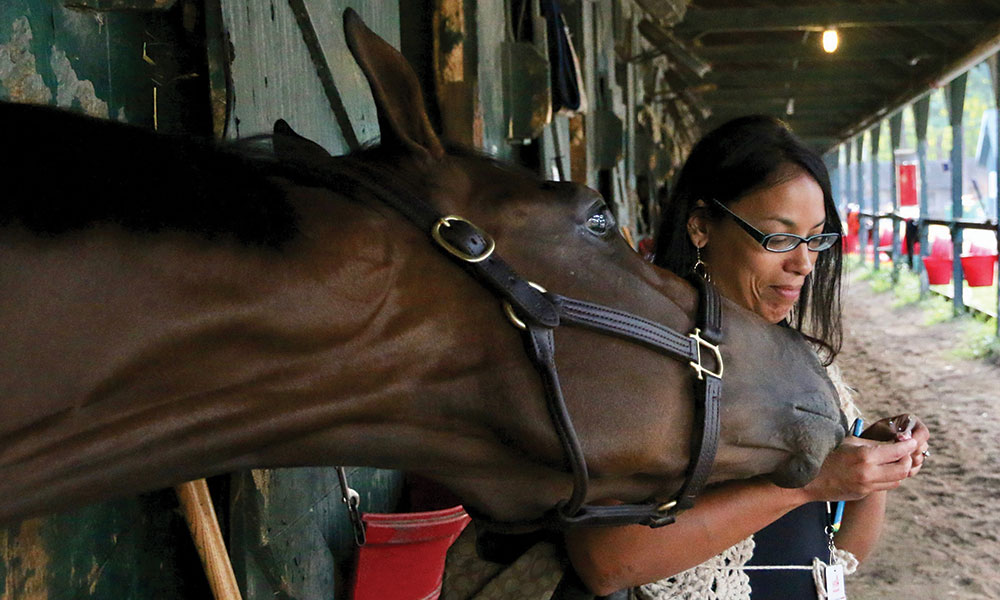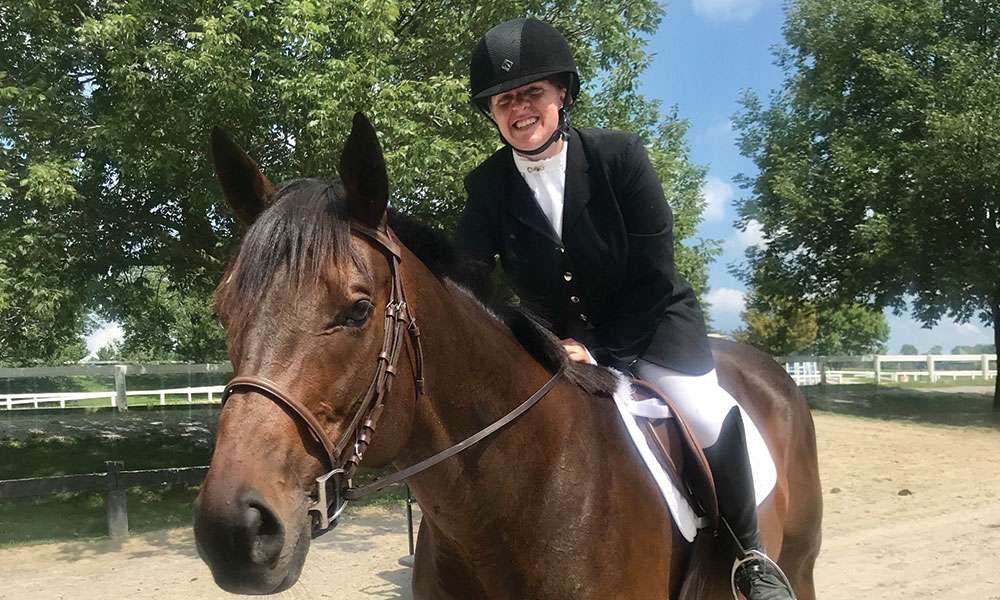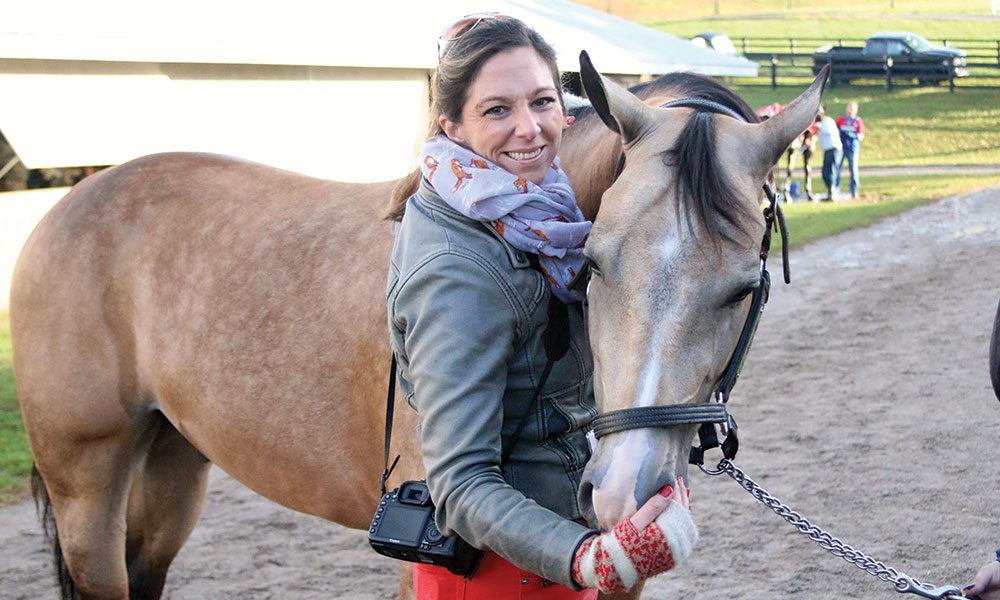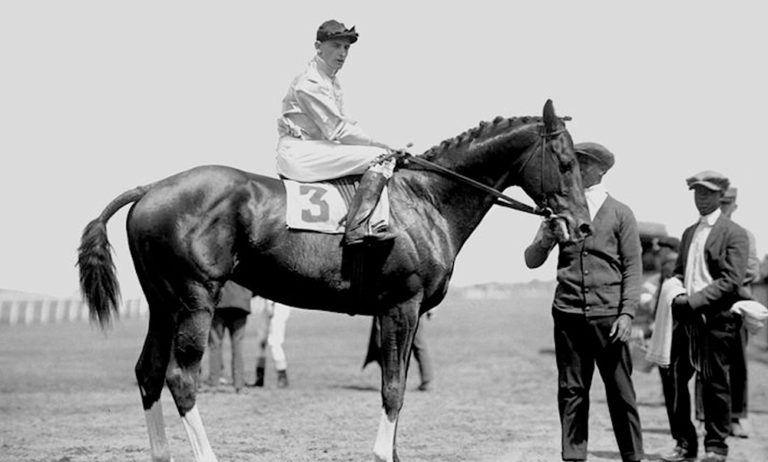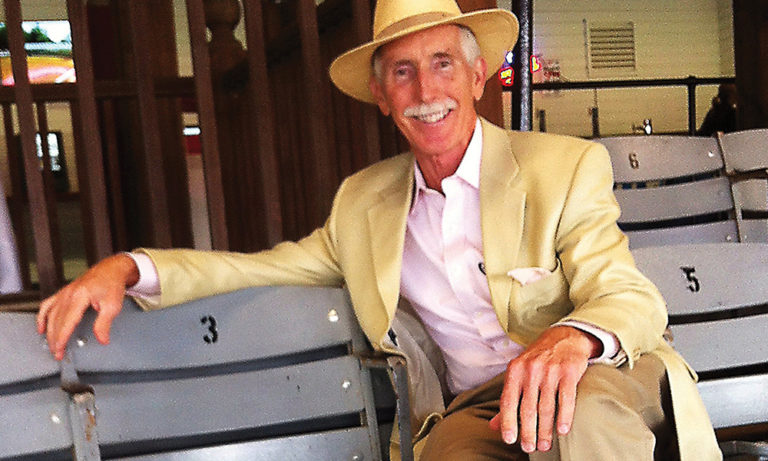The first time I met Jimmy Wilsey was in the fall of 2017. A talented, well-respected Thoroughbred exercise rider and jockey, Jimmy had last competed at Saratoga Race Course seven years prior. I remember it being a particularly cold morning—and it wasn’t at a place you’d expect to meet a talented sportsman: We were at Code Blue Saratoga, the city’s homeless shelter, where he was staying as a guest. That morning, I was there as a volunteer, serving breakfast, and I couldn’t help but wonder how a professional jockey could end up in a homeless shelter in Saratoga, a city globally famous for horse racing.
This past spring I reached back out to Jimmy, and he was kind enough to share his story with me—and by extension, you.
It turns out that he’d grown up in Saratoga and been fully entrenched in the horse racing community since he was a little boy. His father, Dan, had been a successful harness jockey in the 1970s and ’80s and had taught his son, from an early age, the hard-scrabble life that comes with being part of the horse racing community. Jimmy had to be up at the crack of dawn to do barn chores, such as feeding and watering horses—even in the dead of winter in zero-degree weather. It was tough work—and it made every other job on the planet seem easy to Jimmy.
By the age of ten, Jimmy had made up his mind that he wasn’t going to follow in his father’s footsteps in the harness world, but rather, set his sights on racing Thoroughbreds. Thankfully, his father embraced his son’s dream, and through his father’s connections, Jimmy started riding Thoroughbreds almost immediately. By ninth grade, he was riding so well that high school became an afterthought—and he asked his father if he could drop out to pursue his jockey’s license, so that he could ride full time. Naturally, his father had some reservations about the idea, but following a heavy discussion, he agreed and signed his son’s paperwork. Jimmy was now on the path to greatness.
For the next three decades, Jimmy worked as a freelance exercise rider and licensed jockey, gigging for many of the top trainers in the industry, including Todd Pletcher and Gary Contessa. In addition to racing at Saratoga, Jimmy picked up mounts at Belmont Park, Finger Lakes Racetrack and Aqueduct Racetrack, among others. What kept him coming back for more? I asked him. “It’s the excitement of getting on a horse and taking it into the gate while it’s rearing up,” he said. He had a special place in his heart for his home turf at Saratoga Race Course, even though he never won a race there. Jimmy’s career was going gangbusters throughout the ’90s and first decade of the aughts. He’d come a long way from those days of doing barn chores in the bitter cold; he was now spending his winters in Ocala, FL, returning to Saratoga every summer for the big racing meet.
In the summer of 2017, just a few months before I first met him, Jimmy was renting a motel room in town in advance of the Saratoga meet, unsure of when he’d need to return to Florida. That July, he was dealt a bad hand: Just before the beginning of the meet, he was badly burned on his leg while helping fix a friend’s car. It was so bad that it prevented Jimmy from riding. “I was like a fish out of water,” he said. Though his finances began to dwindle because of his mounting medical bills and that motel room, Jimmy kept a positive outlook, hopeful that he’d be able to ride before the end of the meet. He was healing quickly, and just as the meet began winding down, Jimmy was riding again. Phew.
But about three weeks later, catastrophe hit again, and this time, it was a devastating blow. While crossing the road in Wilton, Jimmy was hit by a car, and the injuries he sustained were so severe that he was, once again, unable to ride. This time, he spiraled into depression. With his livelihood and earnings on hold—not to mention a whole new pile of medical bills to pay—it wasn’t long before Jimmy couldn’t afford his motel room. Despite having a loving family and deep contact list in the industry, Jimmy chose not to ask for help. So, for the first time in his life, he became homeless, slipping deeper into depression and starting to drink heavily. “I hit rock bottom,” he told me. When it got too cold outside to bear, he decided to enter Code Blue. Although he remembered the staff being wonderful, he found himself having a bit of an out-of-body experience there: He looked at other guests and thought, “I don’t belong here.” And after some much-needed self-reflection, Jimmy knew that he had to stop drinking to get his life back together. He worked hard on his sobriety and recalled that the staff at Code Blue had been incredibly supportive, celebrating each sober day with him. He was 54 days dry when he was finally able to leave Code Blue, this time, with a job and a place to stay. As soon as he saved up enough money, he took the bus back down to Florida and never looked back.
These days, Jimmy lives near his mother in Florida and has continued to maintain his sobriety. He’s gotten himself back into “jockey shape,” as he describes it, working as an exercise rider and doing what he’s always known and loved. When I asked Jimmy if he planned to race again, he said, hesitantly, “I’ve been thinking about it.” At the end of the day, Jimmy told me that he doesn’t let the brief time he spent at Code Blue define him; it was just one in a series of “stepping stones” that helped him get his life back together. “Code Blue asked me no questions,” he said. “They just gave me what I needed to get through the worst time in my life.” I came away from our conversation inspired—and I hope that someday, maybe, we’ll get to see Jimmy Wilsey race again at Saratoga.


